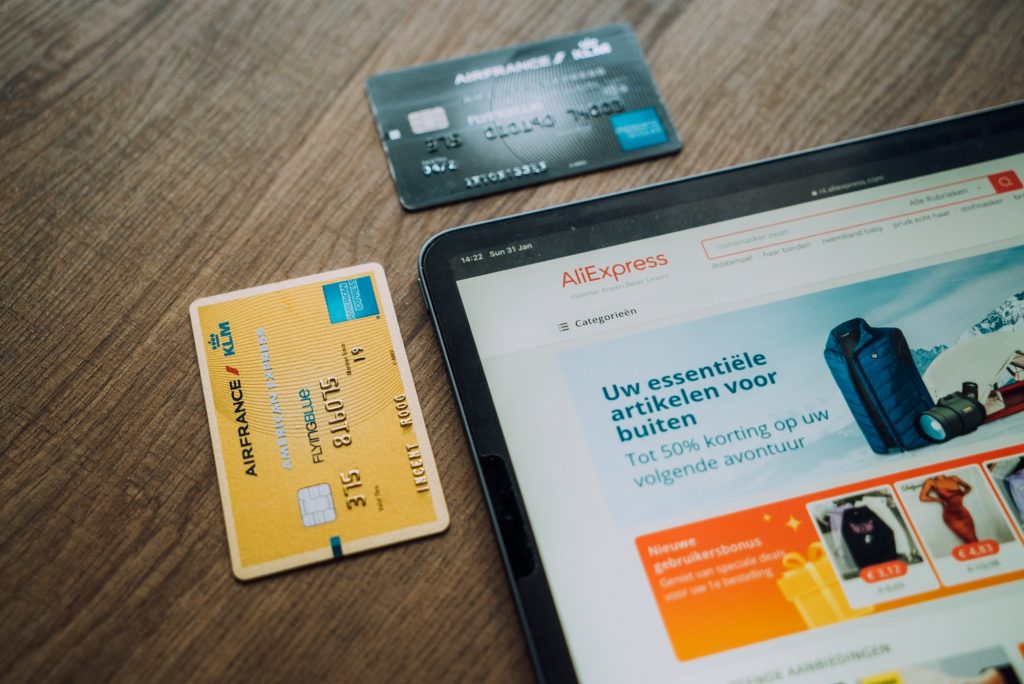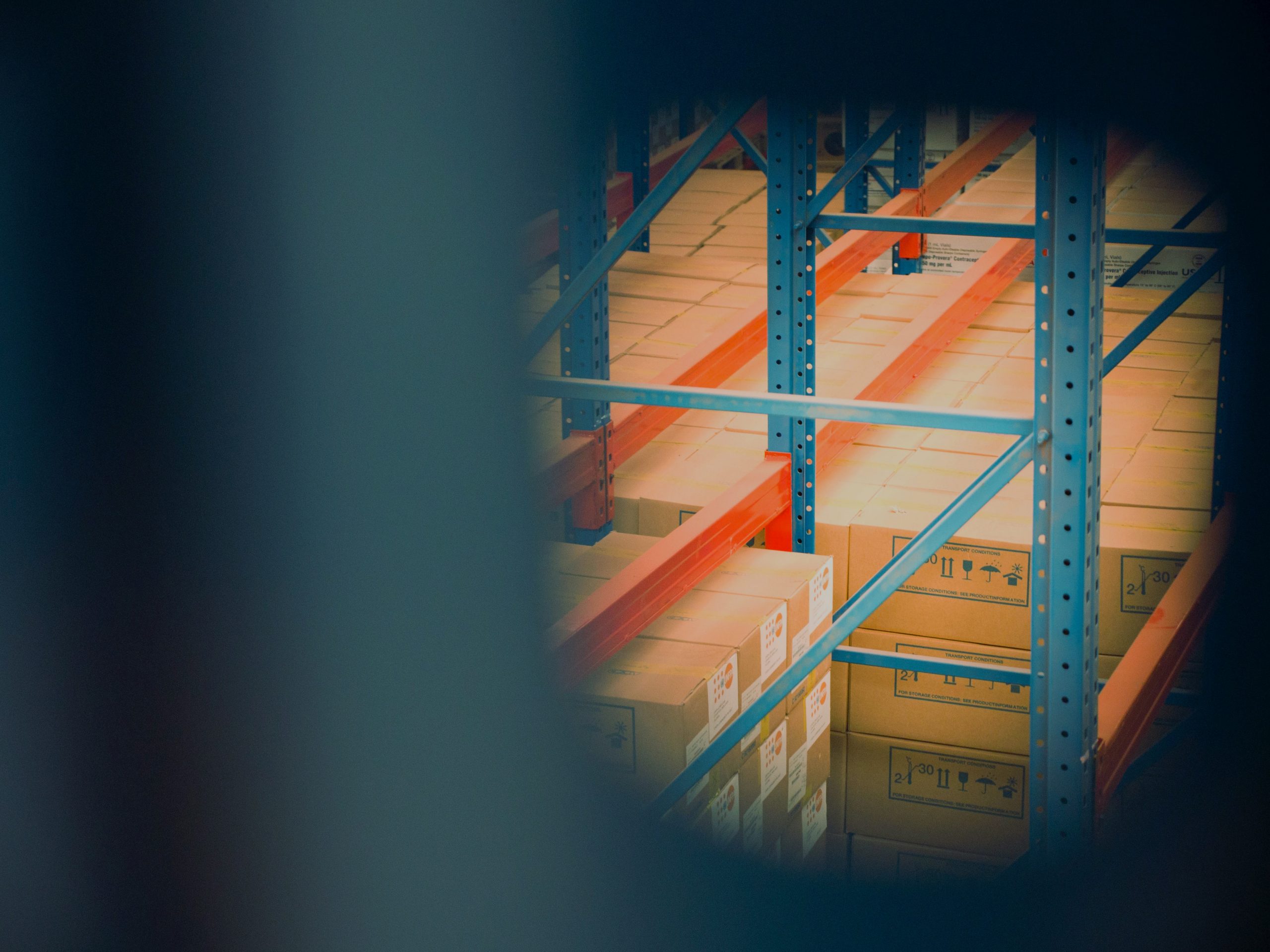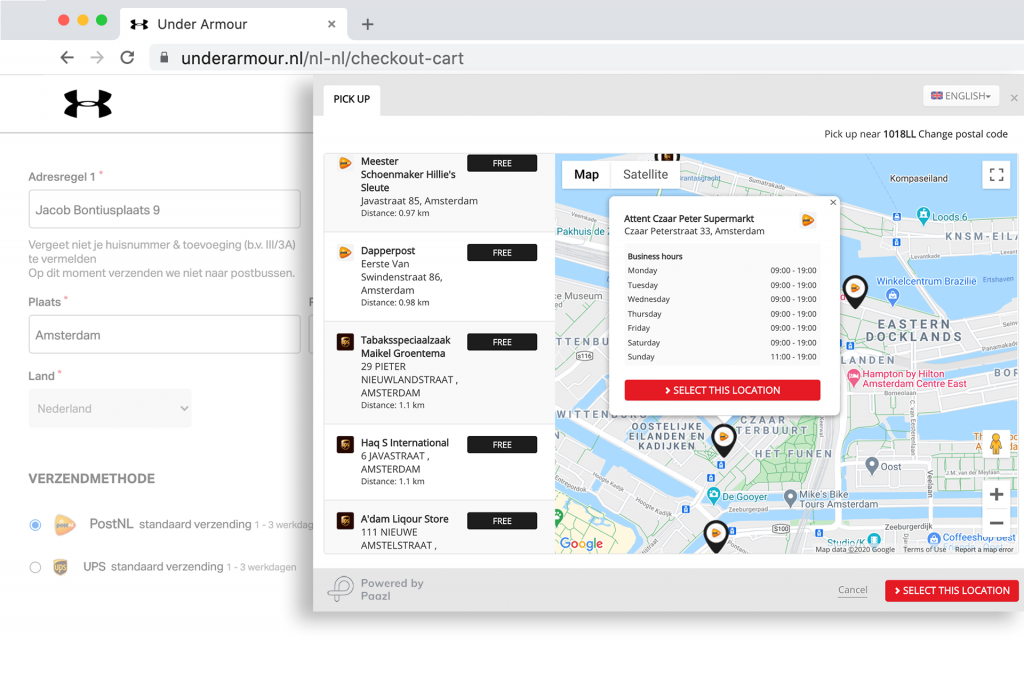5 E-commerce Delivery Trends for 2021

With e-commerce booming, and physical stores mostly closed, we researched the 5 biggest e-commerce delivery trends in 2021, that you need to be aware of. Delivery is a vital part of your e-commerce channel, and there are a few things that you need to consider when developing your e-commerce delivery strategy.
Delivery
Flexibility
Omnichannel Commerce
Fulfilment & Logistics
Sustainable Delivery
Online Marketplaces
1. Flexibility in your array of carriers & delivery options: Choice = conversion
When researching e-commerce delivery trends in 2021, flexibility in delivery options and carriers is the ideal place to start. For a long time, the gold standard in delivery was fast, free shipping. Nothing else mattered. You needed to clearly communicate a free delivery threshold (if you had one), and also indicated an expected delivery time-frame if you weren’t offering next-day delivery as standard. The global pandemic and a period of lockdown has changed that perception to a large degree. Flexibility is perhaps becoming more important than pricing for the first time ever. Consumers want to make their own choices regarding where and when they want to receive or collect the order. With many consumers either willing to pay more to receive a package almost immediately, or on the other end of the spectrum, to receive it at a later moment when it can be delivered via the most sustainable means.
Is same-day delivery still relevant?
A couple of years ago, same-day delivery was considered a trend that would probably fade away, but the importance of sustainability and advancements in omnichannel commerce have meant that quick and easy ship-from-store with bike delivery has once again gained traction. This has maybe been born out of necessity, with shop owners needing a way to sell existing store inventory when the shops are closed. In this case, speed and sustainability can go hand-in-hand. Consumers want convenience, but they are also comfortable waiting for their package a little longer if necessary. A main driver for this is the fact that consumers’ awareness surrounding sustainability is increasing.
“Fast & free” is still the key
Free and fast shipping will remain important motivations for buying from a particular web shop – but not always necessarily because they save money and time, but because they also affect the following:
- Risk aversion. The human brain naturally tries to avoid any risk or uncertainty to which it is exposed. Online shopping is one such example of a risk: buyers cannot physically touch or try on products before purchasing, and they don’t know exactly when orders will arrive. Free and fast shipping help customers avoid this risk because as a web shop you take the financial responsibility of the delivery costs. Your customers should be able to rely on your delivery dates to ensure orders arrive on time. When considering this, it becomes critical to include these options in your checkout. This way you can positively influence your cart abandonment rates.
- Choice. Choice is interesting to consumers. People like to be able to choose because it increases the chance of meeting their needs. Most consumers don’t like to be told what to do, but if you give someone too many choices, it can also be overwhelming. Many retailers overcome this problem of choice by auto-selecting the free shipping option. This means that the customer is less affected by this choice stress, but still has the ultimate decision should they prefer a different option.
2. Omnichannel commerce:
Physical, digital and everything in-between.
Physical stores are struggling with the imposed measures, and brands that sell both online and offline have naturally seen their offline sales decline heavily. In 2021, it will prove vital for retailers to narrow the gap between offline and online. Both channels must be used simultaneously in order to operate as efficiently as possible, as well as to maintain a smooth brand experience. In addition, we saw the D2C trend gain traction in 2020. More and more producers are selling directly to consumers, both online and in their own stores. Brands are able to create a unique and personalized shopping experience by using the data derived from their digital channels.
Omnichannel commerce is not a new development in 2021, however, its importance has been proven significantly over the past 12 months. The more channels you have to reach consumers, the better. Fortunately, there are platforms that make it easy to manage all of your sales channels in one place, and 3PL companies also aide in the process by seamlessly processing orders from different platforms.
84% of consumers say it is important to get a personalized experience across all digital channels while shopping. That means no matter who your customer is or where they are located, their experience with your brand should be the same across all channels. Understanding what your customers want and what their buyer journey is like, is essential in providing your customers with the right information, exactly when they want it.
Omnichannel commerce is a multichannel approach to sales that focuses on providing a seamless customer experience whether the client is shopping online using their phone or a laptop, or offline in a brick-and-mortar store.
3. Fulfilment and logistics: Rapid transformation
In 2021, more use will be made of automated deliveries, smart sensors, blockchain tracking and digital twinning to increase delivery speeds and efficiency. All while cutting costs significantly.
There are also some key trends to be aware of this year including:
- CX: Finding ways to increase and improve communication around each step in the order proces. Perhaps with live-chat features/bots?
- Fulfillment Automation: If a potential investment in fulfillment automation will be cost neutral, or close to it, it could be worth exploring.
- Supply Chain Diversification: Over the last 12 months, merchants that relied exclusively on a single supplier or carrier partner were particularly vulnerable. Over the next year, you will likely see a push towards diversifications across sourcing, fulfillment channels, marketplaces and, most importantly, carriers.

Of consumers say same-day shipping is valuable.
Of online shoppers say free shipping is important when deciding where to shop online.
Of consumers are more likely to shop online if same-day delivery is an option.
4. Sustainability: Consumers expect choice.
For the second year in a row, the Paazl Delivery Index showed that only around 10% of the top 100 Dutch retailers offer a sustainable delivery option during the checkout. On the flip side of that coin, 60% of consumers are reporting making more environmentally friendly, sustainable, or ethical purchases since the start of the pandemic. Transport services are constantly looking for greener solutions to reduce or offset CO2 emissions. 2021 will be a year where greener solutions expand even more into mainstream e-commerce culture.
One of the simplest changes that an e-commerce businesses can make is to offer their consumers sustainable delivery options. You could also consider your packaging – using recyclable materials, or reducing the amount of air in each package can save you money and please your customers. Encouraging greener delivery options such as pick-up points is quick and effective way of empowering your consumers. As e-commerce delivery trends in 2021 go, sustainability will certainly pack a punch.

5. Online marketplaces: Are you prepared?
Marketplaces are no longer only relevant to small players in e-commerce. Marketplaces are bigger than ever and recent developments have created a major advance for new & existing web shops alike. Selling on marketplaces is highly accessible emerging players, but is also a valuable additional channel to existing and flourishing brands. All-in-one stores have a strong consumer appeal and in 2021, it makes sense to be present on one (or multiple) e-commerce marketplaces.
- The brand recognition and marketing of the marketplace can be used conveniently
- Opportunity for cross-border commerce
- Many shipping options with relatively low costs
- Returns management
- Customer service and the customer experience that comes with it
- Marketplaces charge commission and these costs can be quite high
- Customer service could be less effective than your own, reflecting poorly on your brand
- Brand tone of voice could be hindered due to communication T’s & C’s
- Branding limitations could affect how your products are marketed on the platform vs. how you market them yourself
Conclusion: Be flexible!
The world is in flux. Nothing is certain at the moment, so adjusting and adapting to change is vital. Relying on a single solution or partner for the various elements of your e-commerce business will almost certainly land you in trouble. Diversification and flexibility will allow you to quickly pivot when challenges arise, and also to stay ahead of your competition. If you’re like to find our more about how you can be flexible with your last-mile delivery strategy, your delivery options during checkout, or both, then get in touch with us to find out how we’ve been doing it brands like G-Star RAW, Vanmoof, Joolz, Intertoys, Greetz & Rituals for years.

Paazl is the platform for quality delivery in e-commerce.
Paazl delivers more satisfied and engaged customers for your brand and helps your business grow globally.
We enable you to create the best delivery experience possible.
Contact us and we will be happy to tell you more about how we’re powering the promise that brands like G-Star RAW, TAG Heuer, Under Armour, VanMoof and Rituals make to their customers.

